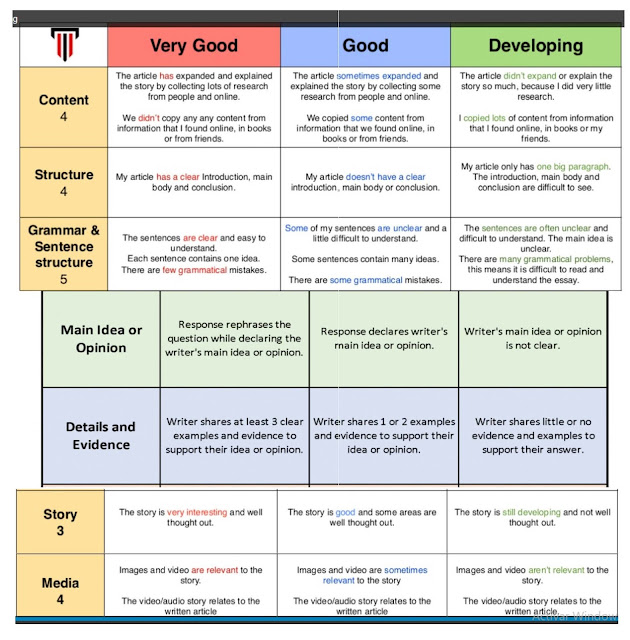Five Things You Need to Know about Writing Articles Read the complete article here. Feature Article Rubric Click HERE to access the rubric Text Features: Reading that Makes Sense Text features are the elements of books, newspapers, and magazines that enhance a reader's experience by pointing out important information and making the text simpler to understand : table of contents, index, glossary, titles, headings/subheadings, text (bold, color, italics), bullets, asterisks, pictures, illustrations, captions, side bars, diagrams, maps, tables, and time lines. As adult readers, we know the importance of using text features in order to help us understand the main body of text. Headings help us to make predictions while reading, and then easily find information after reading. Captions explicitly tell us what we are looking at in a photograph or picture that aligns to the text. An index helps us to find the exact page that contains in...



